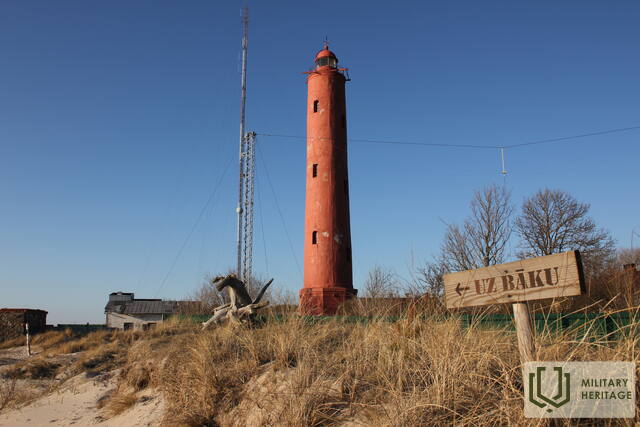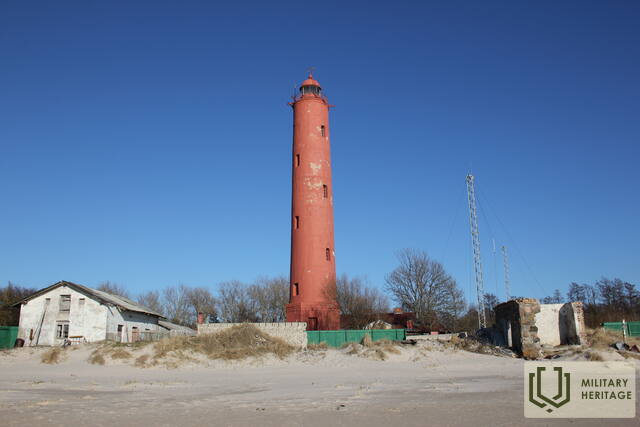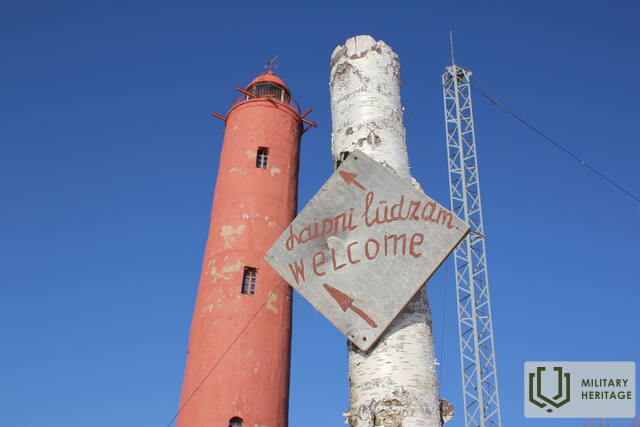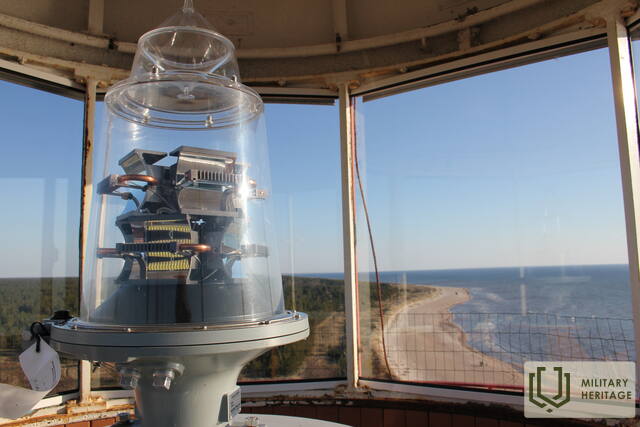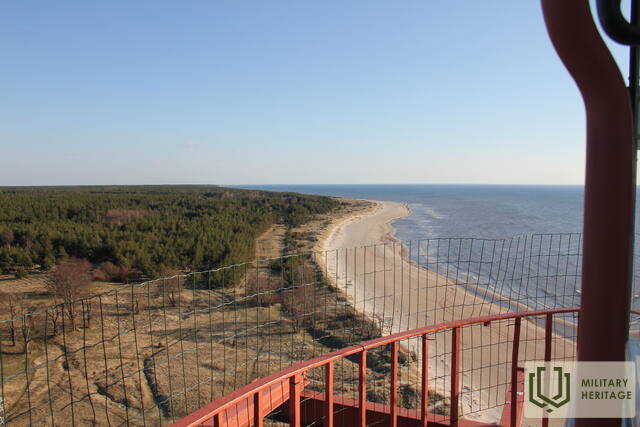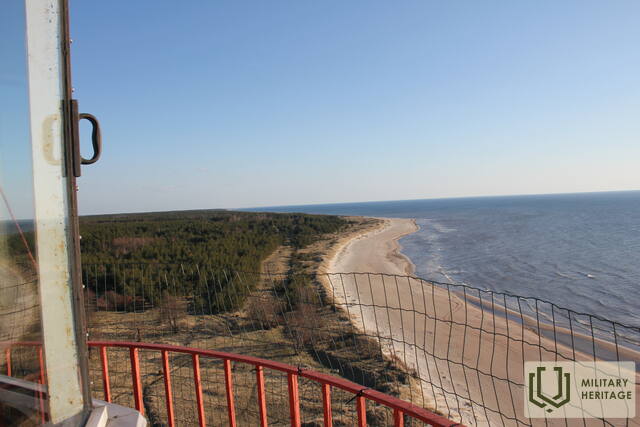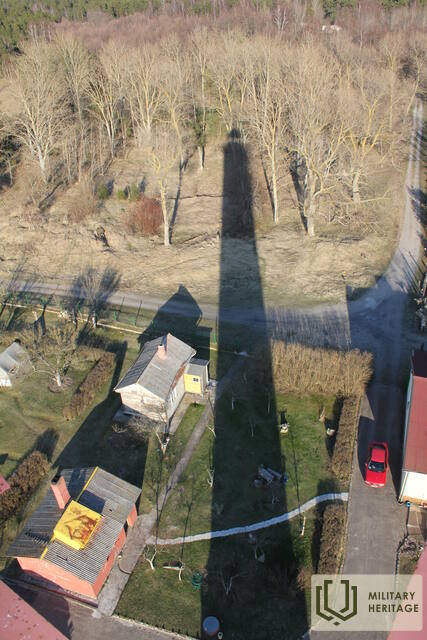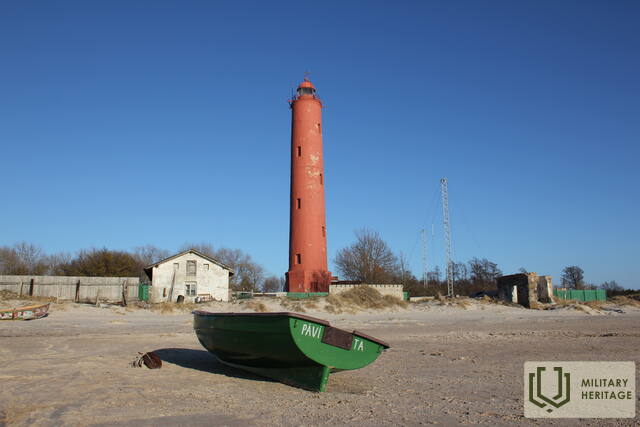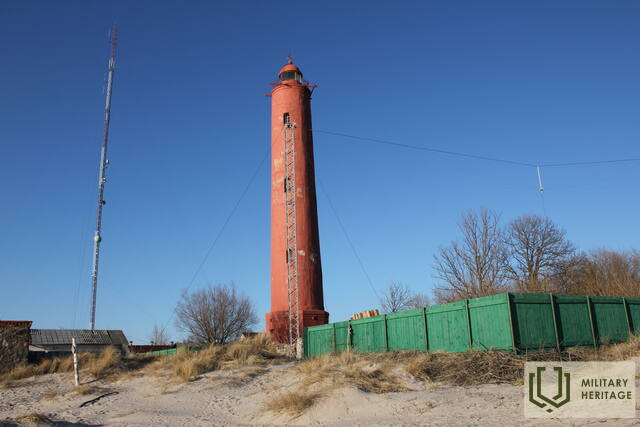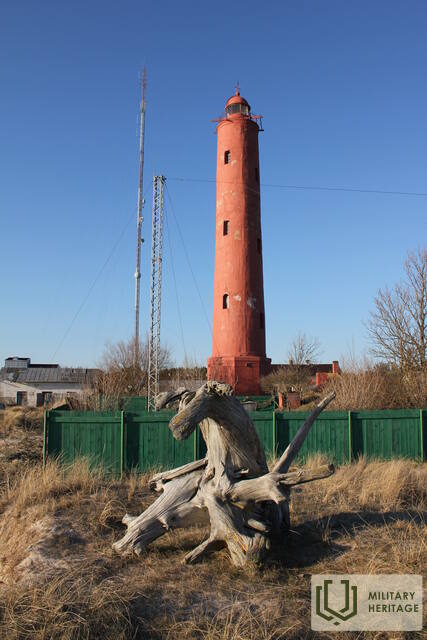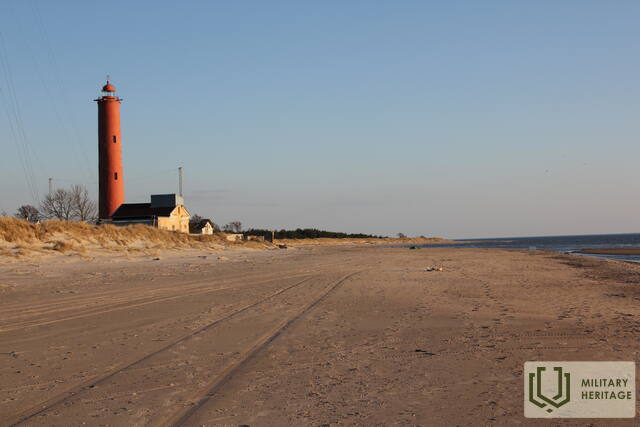Маяк Акмеенрагс и судьба "Саратова" Инфраструктура

Маяк Акменьрагс находится в Сакской волости, в 10 км к юго-западу от Павилосты. На маяк можно подняться по винтовой лестнице, и с него открывается вид на море и окрестные леса. Нынешняя башня маяка высотой 37 м была построена в 1921 году, а предыдущий маяк был разрушен во время Первой мировой войны.
Среди других маяков Латвии маяк Акменьрагс выделяется своим расположением в одном из самых опасных для судоходства мест на всем побережье Балтийского моря. Свет маяка указывает на каменистую отмель длиной около двух морских миль или 3,7 км, достигающий моря в северо-западном направлении. Глубина моря на этой отмели составляет чуть более двух метров. Место, расположения маяка осталось прежним, но берег с годами отступил. Несмотря на то, что навигационный огонь здесь горел ещё с 1879 года, Акменьрагс пережил несколько кораблекрушений. Самое известное из них – посадка на мель латвийского парохода «Саратов» в сентябре 1923 года. В 1919 году Саратов ненадолго стал резиденцией Временного правительства Латвии. В Акменьрагсе располагался пост погранохраны, здесь можно осмотреть здания Советской армии.
Используемые источники и ссылки:
Маяки - Управление Вентспилсского свободного порта (portofventspils.lv)
https://www.latvia.travel/lv/apskates-vieta/akmenraga-baka
Образовательные программы
Экскурсия на Акменрагский маяк
На маяк Акменьрага можно подняться по винтовой лестнице. Поднявшись на маяк, открывается фантастический вид на море и окружающие леса. Маяк является главным украшением Акменьраги. В 2011 году в ходе реализации проекта была реконструирована дорога к маяку Акменьрага. Далеко за пределы Акменьраги распространилась информация об уникальной коллекции янтаря и камней, собранных смотрителем маяка.
Связанная хронология
Связанные темы
Связанные истории
Запрещенные маяки и морской берег
Во времена СССР морское побережье в Северном и Западном Курземе было фактически военной зоной, закрытой для посещения, но посещать маяки и даже фотографировать было запрещено.
«ПЗ» - приграничная зона
Воспоминания председателя Вергальского сельского Совета народных депутатов Андриса Залькалнса (1982–1989) о жизни в приграничье.
Акменрагсский маяк и мелководье - одно из крупнейших кладбищ кораблей в Балтийском море.
Именно в районе маяка Акменсрагс 13 января 1923 года сел на мель и разбился пароход «Саратов» , на котором укрылось временное правительство во главе с К. Улманисом, когда независимое Латвийское государство стало независимым.
Акменрагс военный комплекс
В советское время в Акменрагсе был военный комплекс.
Воспоминания Артура Озолса о корабле "Саратов"
Артурс Озолс окончил Рижскую политехнику и служил морским офицером (мичманом) и инженером на Черноморском флоте России на борту военного корабля "Пантелеймон". Во время освободительной борьбы в Латвии он вступил в студенческую роту. В Лиепае ввел в строй корабль "Саратов". Воспоминания Артурса Озолса о корабле "Саратов" были опубликованы в ежемесячнике "Дауагава ванаги".
Мыс и корабль Саратов
Можно предположить, что Лиепая была столицей Латвии в течение короткого периода времени, потому что во время борьбы за свободу Временное правительство размещалось на корабле "Саратов" именно в этом городе. После освобождения Саратов доставил Временное правительство в Ригу, но многие не знают, что история такого важного для нас корабля закончилась в море у Акменрагса.
Курземское побережье - закрытая зона
Во время холодной войны все побережье Курземе было закрытой для посещения зоной - советские пограничники принимали здесь основные решения: на определенных расстояниях располагались посты охраны, а на пляже - наблюдательные вышки с прожекторными станциями. Гражданским лицам разрешалось находиться на берегу моря только в светлое время суток.
«Вот будет АЭС Латвийской ССР!»
Андрис Занькалнс (1951 г.р., председатель Вергальского сельского Совета народных депутатов (1982-1989)) вспоминает время, когда в Акменрагсе едва не построили атомную электростанцию.
Бронепоезд Латвийской Армии №5 или "Калпаки"
Бронепоезд №5 Латвийской армии или "Калпакс" был легким бронепоездом в вооруженных силах Латвии в 1919 году.




